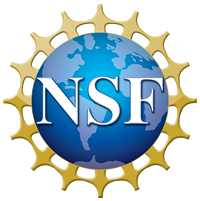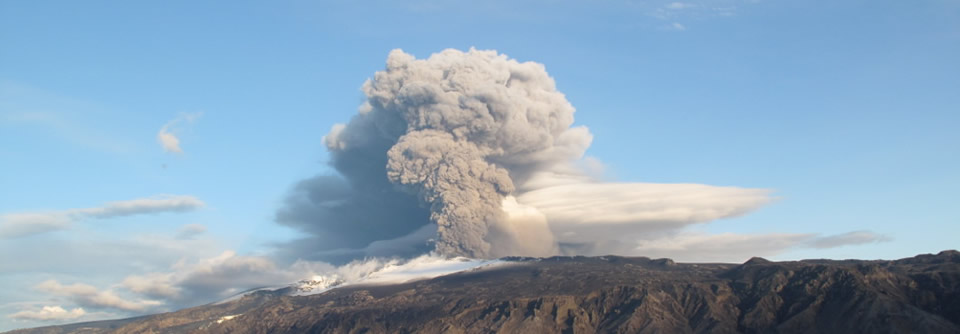
MINES Thermodynamic Database
On This Page

National Science Foundation
Welcome to the MINES 2023 thermodynamic database! This project is an initiative to generate a revised internally consistent thermodynamic dataset for minerals, aqueous species and gases for simulating geochemical processes at hydrothermal conditions in the upper crust (≤5 kbar and ≤600 °C) with focus on ore forming processes. This open access dataset is maintained with the aid of the program GEM-Selektor. To install the database follow the instructions below. In addition, several modeling project files (Modules) have been prepared to get you started with GEMS. To run these, please follow the instructions in the GEMS Tutorials section.
https://doi.org/10.58799/mines-tdb
Latest Version: (updated September, 2023)
- MINES 23.1
- 2023.1 Reference list(.xlsx file)
- Database documentation and installation guide
- Installation instructions can be found in the gitbook tutorial
- Workshop MINES 23 presentation slides
Prior Versions:
- MINES 23 Reference list (.xlsx file)
- MINES 19.1Reference list (.xlsx file)
- MINES 19
- MINES 18Reference list (.xlsx file)
- MINES 17
- MINES 16
- MINES 15
Current and future MINES database features
The philosophy of the MINES database follows a rolling release approach, meaning that new versions will become available once updated with the following features:
- Major rock forming mineral properties from Holland and Powell (1998)
- Selected mineral properties from the Robie and Hemingway (1995) USGS database.
- Revised SUPCRT92 data for aqueous species
- Experimental data for REE-, Sn-, Al-, and Zr-bearing minerals/aqueous species and metals for studying hydrothermal ore deposits.
- Mineral multisite and multicomponent solid solution activity models (e.g., feldspars, chlorite, epidote, phyllosilicates).
- Gases equations of state for H2O, CO2 , O2 , H2 , CO, CH4 , HF, HCl, H2S, SO2 .
GEMSFITS will be used in future versions for the compilation of thermodynamic properties and experimental data in the open JSON format. The latter provides a flexible way to organize and import experimental data and the possibility to export and adopt the MINES database in other commonly used free numerical modeling programs.
Contributors
- Alexander P. Gysi — New Mexico Bureau of Geology and Mineral Resources
- Nicole C. Hurtig — New Mexico Tech
- Ruiguang Pan — Indiana University
- Dan G. Miron — Paul Scherrer Institute
- Dmitrii A. Kulik — Paul Scherrer Institute
Acknowledgments
Database development, data compilation for critical elements and student support was possible through the sponsorship by the National Science Foundation and the U.S. Department of Energy.
- NSF grant EAR-2032761 and NSF CAREER EAR-2039674 to Alexander Gysi.
- Office of Science, U.S. Department of Energy, Basic Energy Science, Grant No. DE-SC0021106 and DE-SC0022269 to Alexander Gysi.
License
This database is free to use, share, and modify. Please use the preferred citation below to acknowledge use of the MINES database and for any work derived from it.
Preferred Citation
- Gysi, A.P., Hurtig, N.C., Pan, R., Miron, G.D., and Kulik, D.A., 2023, MINES thermodynamic database, New Mexico Bureau of Geology and Mineral Resources, version 23, https://doi.org/10.58799/mines-tdb
References and application examples
- Gysi, A.P., Williams-Jones, A.E. (2013) Hydrothermal mobilization of pegmatite-hosted Zr and REE at Strange Lake, Canada: A reaction path model. Geochimica et Cosmochimica Acta 122, 324-352, https://doi.org/10.1016/j.gca.2013.08.031
- Gysi, A.P. (2017) Numerical simulations of CO2 sequestration in basaltic rock formations: challenges for optimizing mineral-fluid reactions. Pure and Applied Chemistry 89, 581-596, https://doi.org/10.1515/pac-2016-1016
- Hurtig N., Hanley J., Gysi A.P. (2018) The role of hydrocarbons in Pillara Mississippi Valley-Type Zn-Pb ore formation, Canning Basin, Western Australia. Ore Geology Reviews 102, 875 893, https://doi.org/10.1016/j.oregeorev.2018.09.012
- Perry E., Gysi A.P. (2018) Rare earth elements in mineral deposits: speciation in hydrothermal fluids and partitioning in calcite. Geo fluids 2018, Article ID 5382480 (open access), https://doi.org/10.1155/2018/5382480
- Pierre S., Gysi A.P., Monecke, T. (2018) Fluid chemistry of mid-ocean ridge hydrothermal vents: A comparison between numerical modeling and vent geochemical data. Geofluids 2018, Article ID 1389379 (open access), https://doi.org/10.1155/2018/1389379
Contact
Alexander Gysi
Economic Geologist
New Mexico Bureau of Geology & Mineral Resources
New Mexico Institute of Mining & Technology
801 Leroy Place
Socorro NM 87801-4796
575-835-5754
Alexander.Gysi@nmt.edu

Alexander Gysi
Eyjafjallajökull eruption in Iceland, 2010


